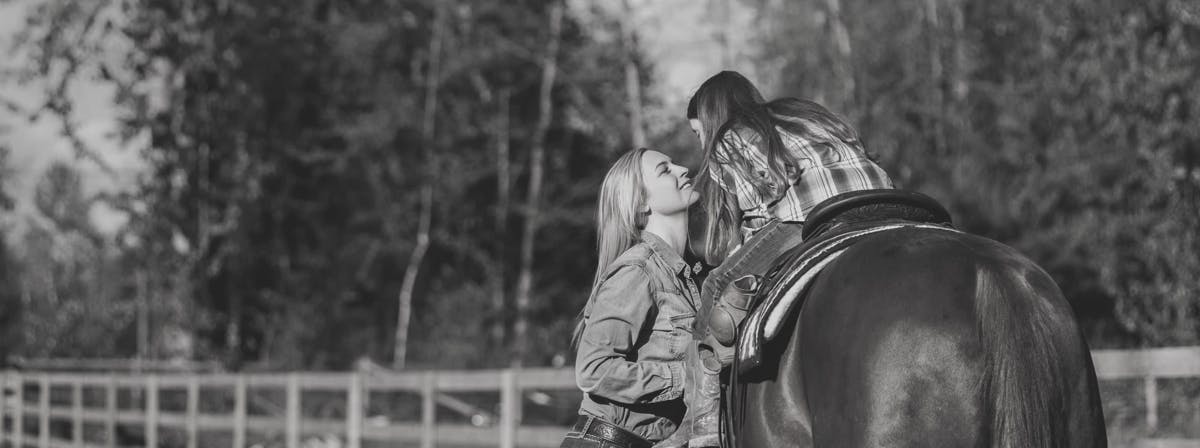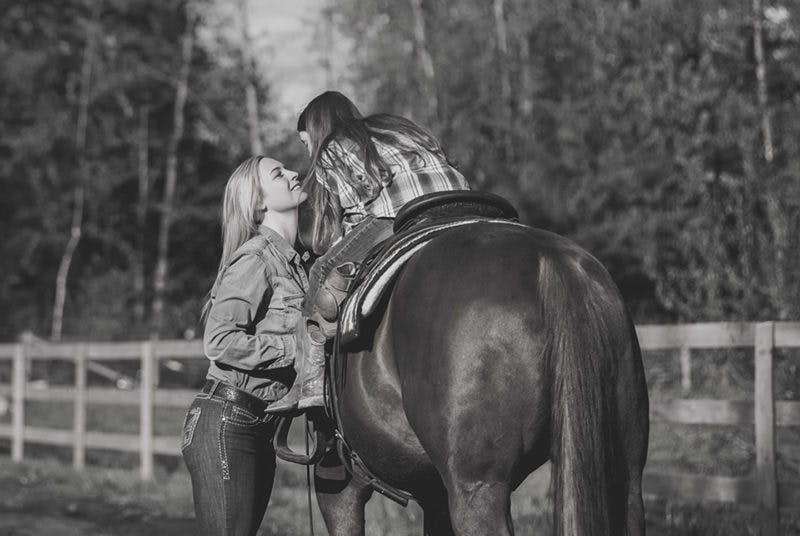Acreage living has incredible benefits. Privacy. Space. Fresh air. And of course, plenty of room for all sorts of animals.
But not all farm animals are created equal. In fact, much of the livestock you will find today on commercial farms has actually been finely tuned over many generations to be of a specific genetic makeup. Often, these adaptations were encouraged by farmers to maximize their yield, be it eggs, meat, dairy, or offspring.
While commercial farming and ranching is a topic for another day, one consequence of all this is that heritage livestock has become less and less prominent across Canada and the rest of the Americas. So much so that many breeds that ruled the farms of our ancestors are now in danger of going extinct.
But, as an acreage owner, you have the unique opportunity to help turn this around. In fact, heritage animals are fast becoming one of the hottest trends in small farms right now. Curious as to why? Let’s take a look at world of heritage livestock:
What is Heritage Livestock?
Quite simply, heritage livestock refers to any breed that used to be prominent on farms, that is before commercial farming took over. Heritage breeds were adapted over many generations to live long, prosperous lives in their specific regions. This includes being able to protect themselves from local predators, resist common diseases and parasites in the area, find food easily, mate naturally, and have an all-around increased chance at longevity. This is how farms were able to survive before science began playing a much larger role in our agriculture.
However, now that the vast majority of our livestock is bred and used in commercial operations, these heritage breeds are no longer favoured. As such, their numbers have dwindled in size, being kept alive only by specialty breeders.
Who Defines “Heritage”?
Unfortunately, there is not yet a recognized governmental definition that clearly defines what is and is not a heritage breed. However, the independent farmers and ranchers across the country have taken it upon themselves to create clear definitions of what does and does not qualify based on a set of established parameters.
Here’s an abridged version of those parameters based on the type of animal:
Turkeys
There are three main criteria of which a turkey breed must pass in order to be considered heritage:
Naturally Mating
The breed of turkey must reproduce through naturally mating pairs, and not the artificial breeding conducted by most commercial turkey farms
Long Lifespan
Heritage turkeys must be able to withstand a free range, outdoor lifestyle, and survive for at least 5 years.
Slow Growth Rate
Heritage turkey breeds should take a minimum of 28 weeks to reach their full adult weight.
Some examples of heritage turkey breeds include the Jersey Buff and Midget White.
Chickens
Much like heritage turkeys, chickens must meet three main qualifications in order to be considered heritage: naturally mating, long lifespan, and slow growth rate (in this case, 16 weeks or more before maturity).
In addition to these three qualifiers, heritage chickens must also come from parent and grandparent stock of breeds recognized by the American Poultry Association prior to the mid-20th century. Some such breeds include Nankin, Old English Game, New Hampshire, Buttercup, and more.
Cattle
Requirements for cattle to be considered heritage are a bit more robust than poultry, with 4 main qualifications that need to be met:
True Generic Breed
Cattle must come directly from a true generic breed, meaning that when mated together, an offspring of that breed is reproduced.
Endangered Species
In order to be considered heritage, cattle must appear on the Conservation Priority List as either Critical, Threatened, Watched, or Recovering.
Long History in the Americas
Heritage breeds must have been established on the continent prior to 1925.
Purebred Status
Cattle must be purebred, and be registered as such, in order to qualify as Heritage.
Some examples of heritage cattle include the Dexter, Galloway, Highland, and Texas Longhorn.
Pigs
Much like turkey and chickens, heritage swine and heritage cattle have identical requirements to achieve their classification. All heritage pigs must be considered a true genetic breed, and endangered breed, have been in the Americas prior to 1925, and have purebred status.
Some examples of heritage swine include the Mulefoot, the Large Black, the Red Wattle and the Tamworth.
Consideration for Breeding Heritage Livestock
As you can see, there are a lot of considerations that go into defining a certain breed of livestock as heritage. Similarly, there are a lot of considerations that need to be made when determining if you want to raise heritage animals on your acreage.
While rewarding, it’s difficult work, and can often be expensive as well. It’s important to think through all the details before you get started. Because once you do, it will be exceedingly hard to backtrack.
The Purpose
The first – and most important – step in raising heritage livestock is determining why you want to do it in the first place. What’s the intended use of the animals? Are you looking to just have some company on the farm? Do you want to use them for eggs, meat or dairy? If so, do you intend to sell these items locally, or are they just for your own consumption?
By answering these questions in the beginning, you’ll be able to build a much better plan for the types and quantity of livestock you wish to raise on your farm.
The Location
Though the term “heritage” may sound a little fancy, let’s be clear: these are very much still farm animals. They make noise. The cause commotion. And they most certainly leave behind “waste”.
It’s important to think through all of this when deciding if you want to raise heritage livestock on your acreage. Would the animals have sufficient room to roam? Are you near any neighbours that might not be fond of the stench of pigs or crowing of roosters? Are there any watersheds that would be affected by the animals and their droppings? All things worth considering before you move forward!
The Regulations
Many areas have lengthy lists of regulations when it comes to raising livestock – even on a small family farm. This is especially important in the case of selling any of the products your heritage livestock would produce. Even something as simple as selling farm-fresh eggs from your chickens in front of your home could require a permit depending on where you live.
Be sure to consult with your local township to ensure you understand all the rules and regulations regarding heritage livestock before you make any major plans!
The Cost
Raising any sort of livestock can come with significant costs. Feed and shelter alone can run up quite a significant bill. While this can be offset if you plan to sell the animals or the products they produce, you need to consider the local market, and if it’s sufficient enough to provide you the income needed to properly raise these animals. Selling a couple hundred eggs each weekend at the farmer’s market is not going to net you a whole lot of money to pay for the supplies and food needed to care for your chickens.
While many people get into raising heritage livestock for the love of animals (and not for profit), it’s still important you consider all the expenses, and ensure are comfortable with them before moving forward.
How to Get Started
Still interested in exploring the opportunity to raise heritage livestock on your acreage? Great! It can be a tremendously rewarding experience.
Thankfully there are plenty of great resources out there that can help get you started. The Livestock Conservatory is a group dedicated to all things heritage livestock, and have wonderful resources available for deciding exactly which types and breeds of animals are best for your needs and land type and size.
While challenging, raising heritage animals on your farm will most certainly help you connect with the roots of your ancestors. So, get out there and start exploring your options today. You never know what “old school” animals you’re going to welcome onto the farm!



